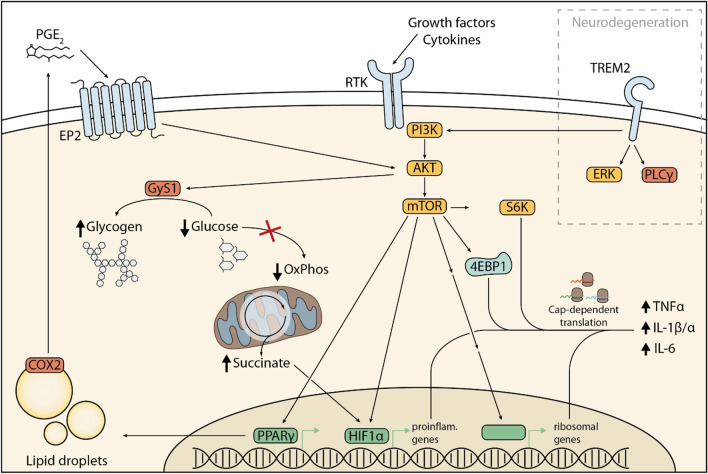Fig. 1.
Signaling pathways altered in aging microglia. Aging is characterized by changing in metabolism, such as increased levels of eicosanoids, such as prostaglandin E2 (PGE2) [54], growth factors and cytokines that lead to the activation of the PI3K-AKT-mTOR signaling pathway in microglia [27]. AKT activation promotes sequestration of glucose into glycogen, causing energy depletion and accumulation of succinate [54]. Succinate is known to stabilize the transcription factor HIF1a, which is also induced by mTOR signaling [150] and promotes transcription of pro-inflammatory genes [54]. In parallel, mTORC1 induces transcription of ribosomal genes through multiple mechanisms [151–153]. Collectively, this results in increased translation of pro-inflammatory factors such as TNF, IL-1b, and IL-6 in aged microglia [27]. Downstream of mTOR, the transcription factor PPARγ, among others, promote lipid droplet formation in myeloid cells [154], suggesting a potential similar mechanism in microglia. COX2, which is located at the droplet membrane, in turn produces more PGE2, leading to a feed-forward loop [154]. The PI3K-AKT-mTOR pathway is activated by TREM2 and is required for microglia ability to respond to amyloid-β deposition [60]. TREM2 variants resulting in reduced expression are associated with neurodegeneration [61, 62].

